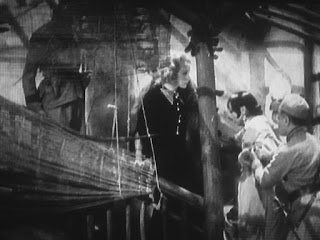Claire Boucher, Los Angeles, California, October 2015
To begin with, this seven minute video deserves some exegesis. It helps to know the names of the characters Ms Boucher plays in her short two act drama, but those are presented only in the end titles, so I’ll start with the title of the first act, which is a reference to some lines in a Play by Shakespeare, the Merchant of Venice. The heroine, Portia, has disguised herself as a legal advocate and argues that Shylock is due his pound of flesh, but not a drop of Antonio’s blood. Boucher uses a typeface that seems intended to evoke the one used in the First Folio (though it isn’t an actual match.) Likewise the division of the video into acts again suggests that there is something parodically archaic being presented. The main characters in her drama are called LV and Roccoco Basilisk. The reptilian Basilisk (Greek meaning: little king) is a mythological creature whose breath and glance are lethal, but Roko’s Basilisk is a philosophical conundrum concerning a future all powerful artificial intelligence capable of time travel that favors those in the past that will contribute to its development and harms those who would thwart it. Given her fascination with, the novel, DUNE, and its future devoid of artificial intelligence due to the putting down of a Cyborg Revolution, one begins to see where Claire is going with all this. The music, by the way, is thoroughly infectious. I’ve lost count of the number of times that I’ve watched this video and listened to the two songs it contains.
To begin with, this seven minute video deserves some exegesis. It helps to know the names of the characters Ms Boucher plays in her short two act drama, but those are presented only in the end titles, so I’ll start with the title of the first act, which is a reference to some lines in a Play by Shakespeare, the Merchant of Venice. The heroine, Portia, has disguised herself as a legal advocate and argues that Shylock is due his pound of flesh, but not a drop of Antonio’s blood. Boucher uses a typeface that seems intended to evoke the one used in the First Folio (though it isn’t an actual match.) Likewise the division of the video into acts again suggests that there is something parodically archaic being presented. The main characters in her drama are called LV and Roccoco Basilisk. The reptilian Basilisk (Greek meaning: little king) is a mythological creature whose breath and glance are lethal, but Roko’s Basilisk is a philosophical conundrum concerning a future all powerful artificial intelligence capable of time travel that favors those in the past that will contribute to its development and harms those who would thwart it. Given her fascination with, the novel, DUNE, and its future devoid of artificial intelligence due to the putting down of a Cyborg Revolution, one begins to see where Claire is going with all this. The music, by the way, is thoroughly infectious. I’ve lost count of the number of times that I’ve watched this video and listened to the two songs it contains.






































































































